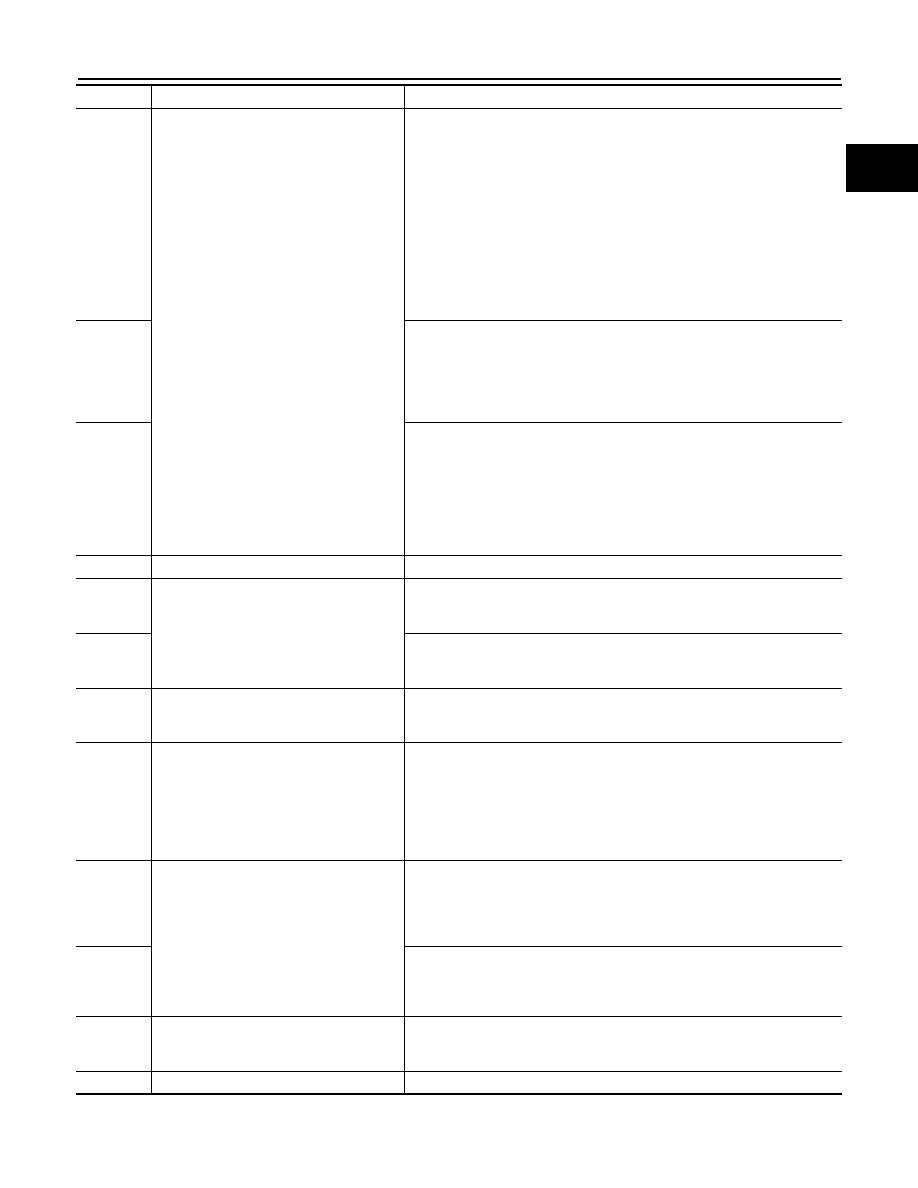содержание .. 924 925 926 927 ..
Nissan X-Trail 32. Manual - part 926

SYSTEM
EC-833
< SYSTEM DESCRIPTION >
[R9M]
C
D
E
F
G
H
I
J
K
L
M
A
EC
N
P
O
P0641
Sensor power supply
• EGR valve is closed position
• Throttle control motor is opened
• The pressure downstream turbo exists then the limit: Otherwise cut regu-
lation turbo
• Limited upstream turbine pressure regulation if the sensor is present: Oth-
erwise, the boost pressure regulation is cut
• Torque limitation
• Airflow regulation cut off
• CSF regeneration forbidden
• CCSL deactivation with dashboard message
• Freeshift inhibited
• Increased idle speed
• After sales routines forbidden
P0651
• Air conditioner deactivation
• Torque limitation
• CCSL deactivation with dashboard message
• Freeshift inhibited
• After sales routines forbidden
• FAN 2 activation
P0697
• EGR valve is closed position
• Throttle control motor is opened
• Rail pressure limitation
• CSF regeneration forbidden
• After sales routines forbidden
• CCSL deactivation with dashboard message
• Freeshift inhibited
• ESP deactivated and AGB in limp home mode
P0833
DPF pressure sensor
CC/SL not available
P1010
P1012
P1013
Intake manifold runner control valve
Stop intake manifold runner control valve control (Fully open position)
P1011
• Stop intake manifold runner control valve control (Fully open position)
• CCSL deactivation
• Freeshift inhibition
P1453
DPF pressure sensor
• EGR valve is closed position
• Throttle control motor is opened
• Prohibit DPF regeneration
P1480
P1481
P1482
P1483
Exhaust electric throttle control actuator
• EGR valve is closed position
• Throttle control motor is opened
• Airflow regulation cut off
• CSF regeneration forbidden
• Compression test routine forbidden
• CCSL deactivation with dashboard message
• Freeshift inhibited
P1484
P1485
P1486
P1487
P1488
Low pressure EGR volume control valve
• EGR valve is closed position
• Throttle control motor is opened
• CSF regenerations forbidden
• CCSL deactivation with dashboard message
• Freeshift inhibited
P1489
• EGR valve is closed position
• Throttle control motor is opened
• Temperature sensor after EGR cooler overheat signal diagnostic set of
data to call the failure manag.
P1544
Exhaust gas temperature sensor 2 circuit
• EGR valve is closed position
• Throttle control motor is opened
• Prohibit DPF regeneration
P1620
ECM
Stop closed-loop control
DTC No.
Detected items
Engine operating condition in fail-safe mode